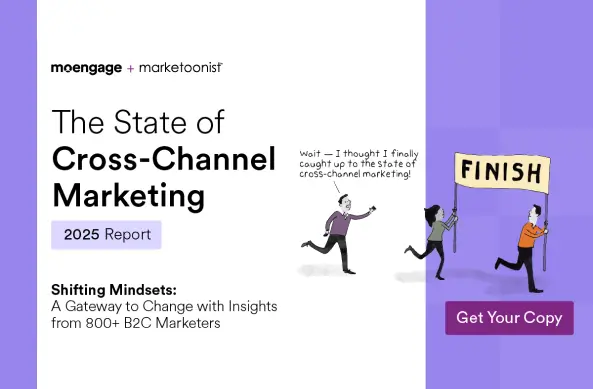6 QSR Marketing Strategies to Amplify Customer Engagement
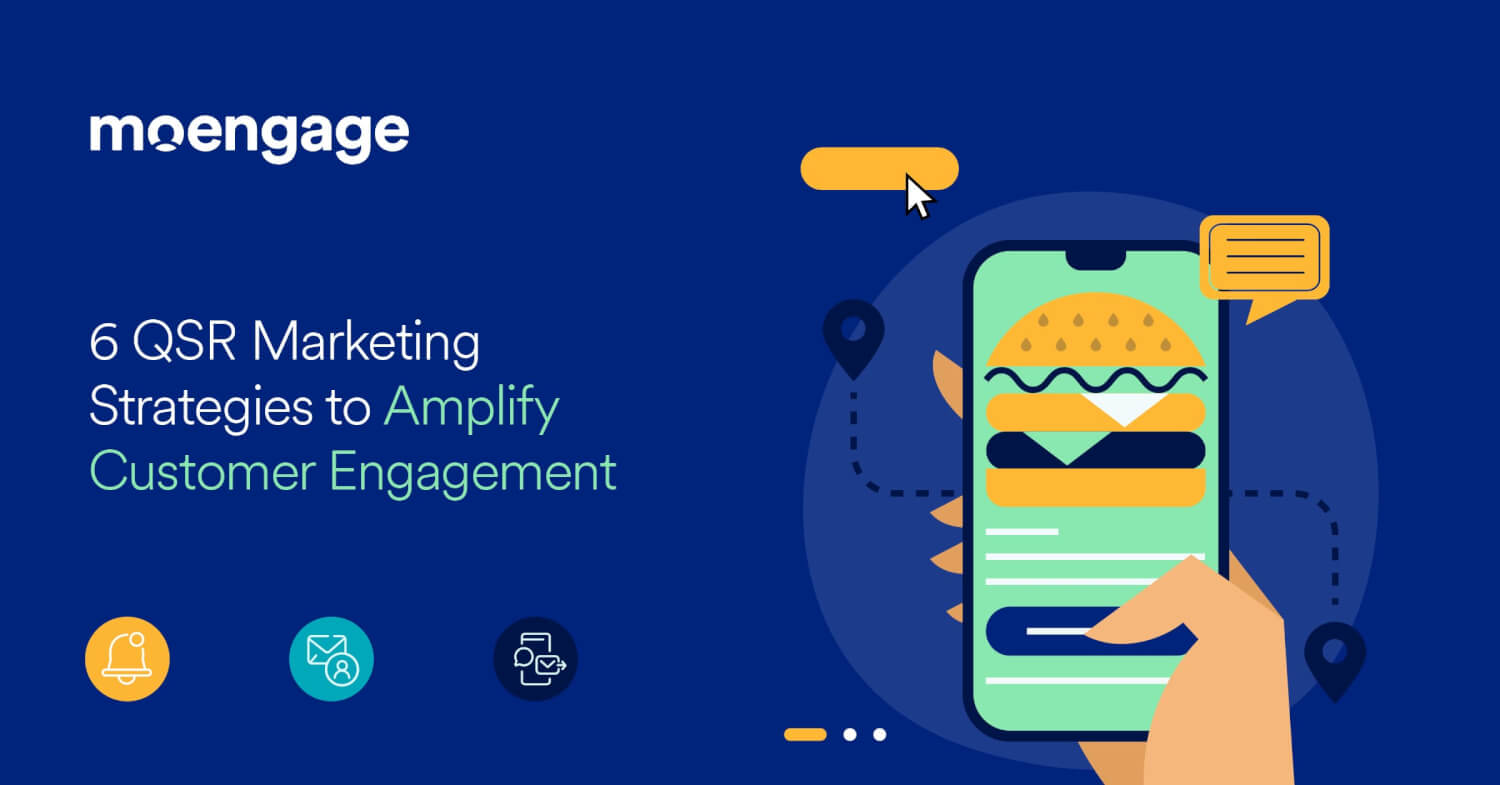
Reading Time: 15 minutes
The foodservice industry is forecast to reach $1 trillion in sales this year, as 9 in 10 consumers say they enjoy going to restaurants, with a majority also viewing the industry as an essential part of their lifestyle. With that much impact, it is no wonder that the fast food and quick service restaurant (QSR) industry is one of the fastest-growing in the US.
However, 45% of restaurant operators expect competition from other restaurants to be more intense in 2024 than it was in 2023. Customers have a wealth of food and beverage options at their disposal, making it increasingly hard for QSR brands to grab and retain their attention. Hence, it’s important for them to deliver timely marketing communication that amplifies the customers’ experiences and keeps them engaged.
This article discusses common challenges in QSR marketing, offers proven strategies for implementation, and showcases examples of powerful brands delivering on marketing innovations.
What is QSR Marketing?
QSR marketing refers to tailored marketing communication used by fast food and QSR brands across online and offline channels, to acquire, engage, and retain their customers.
Customers often choose fast food restaurants when they are on-the-go and trying to save money or time, or are hungry and don’t feel like waiting. Either way, these customers are often relatively impatient. On the upside, they are also typically driven far more by impulse and are making faster (and less reserved) decisions.
Brands that are able to leverage this mindset to send timely, personalized communication can drastically increase the success of their marketing efforts, boost traction, achieve more cross-sells and upsells, amplify engagement, and increase the customer lifetime value.
What is a QSR experience and what makes it unique for customers?
Due to the nature of the industry QSR brands typically prioritizes speed and convenience. Diners are looking for a seamless experience and often have a low tolerance for waiting because they are in a hurry to eat. But this doesn’t just apply to the food itself, it applies to the entire customer experience, from marketing to ordering to pickup.
To facilitate this, QSR brands use digital technology like online ordering, mobile apps, and more to create seamless omnichannel experiences for their customers. The idea is to give customers a familiar experience and consistent communication across all touchpoints, whether that’s via the mobile app, website, drive-thru, or self-serve kiosk.
Beyond this, customers want personalized notifications, reminders, recommendations, and offers based on their previous activity and personal preferences.
This includes providing transactional alerts that inform them when a payment has been processed, service alerts that notify customers of the status of their order and delivery, and personalized marketing messages that provide relevant, unique offers that speak to them.
For QSR brands to excel, they also need to deliver to customers what they want and when they want it. Additionally, they need to encourage active engagement by making these interactions fun, exciting, and rewarding through gamification and rewards.
Tailoring the customer experience with this in mind will help prevent dissatisfaction and churn. But that’s easier said than done.
In the subsequent sections, we explore six of the most common challenges that QSR marketers face, followed by strategies to solve them.
Top 6 Challenges of QSR Marketing
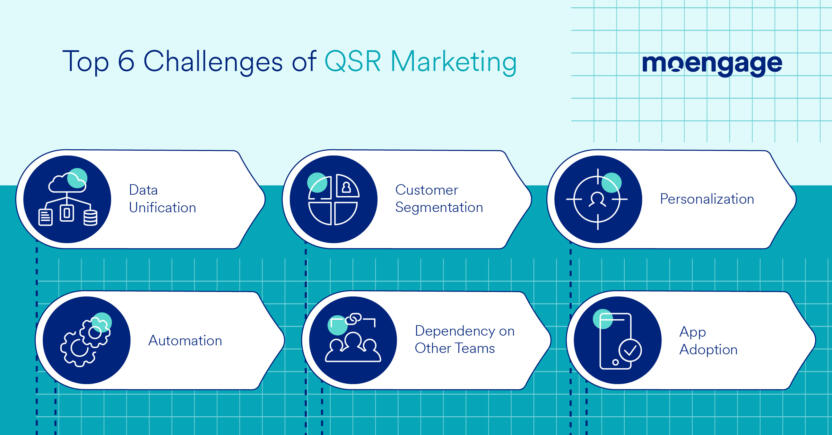
Due to the fast-paced nature of the industry and fickle customer behavior, QSR marketers face numerous challenges, such as:
1. Unifying data from all channels
It can be difficult to gather actionable insights about the customer experience and the journey from order to delivery, when channels are disjointed. This is more common in situations when QSR marketers rely on multiple-point solutions or outdated legacy systems. And this leaves so much of the customer behavior and interactions with the brand a mystery.
Regardless of the channel (online or offline), having a unified customer view and a comprehensive understanding of the entire process from order to delivery — across all touchpoints — is a fundamental part of staying ahead for QSR restaurants. Insights on how the channels work together can reveal opportunities for campaign optimization, cross-selling, and upselling.
2. Meaningfully segmenting customers
Successful customer segmentation isn’t just about going through the motions, it’s about developing useful customer segments that help you inform how to build and distribute personalized marketing campaigns.
However, many QSR marketers face challenges in segmenting their customers. This can be because of multiple factors. According to the State of Cross-Channel Marketing 2024, 34.4% Food and Beverage marketers say that data silos are the biggest hurdles to customer engagement. Simultaneously, 29.8% of marketers say inconsistent data quality from various channels prevents them from effectively segmenting customers. This showcases how not having the right kind of insights often hampers segmentation efforts, leading to ineffective customer engagement campaigns.
To resolve this, QSR marketers need to lay a strong foundation of insights by turning insights into a team sport and carefully choosing their martech stack. This will help you paint a clearer picture of your customers, ensure accurate segmentation — and eventually help you improve the experiences and communication you provide to your customers.
3. Personalizing campaigns
Food preferences are extremely diverse and personal. Because of this personalized marketing is more challenging for QSR marketers than it is in other industries. No wonder 48.9% of Food and Beverage marketers say their biggest customer engagement challenge is delivering personalized experiences.
Again, this is because many QSR marketers rely heavily on outdated legacy tools or multiple-point solutions that make data collation cumbersome and inaccurate. This inhibits their ability to truly understand their customers and execute timely, personalized campaigns that speak directly to them.
On the other hand, using a modern customer engagement platform (CEP) can help you pull together omnichannel analytics into a single dashboard that lets you make insightful decisions about your marketing campaigns and automatically optimize them (including the communication copy, timing, and journey flow). This ensures your marketing communication is geographically and contextually relevant to your customers.
4. Lack of automation
Too many QSR marketers are using manual, outdated methods to manage their marketing campaigns. In fact, 19.15% of food and beverage marketers still rely on spreadsheets to manage their customer engagement programs and 25.5% marketers use legacy systems that are clunky and lack end-to-end automation!
It is no surprise that 38.3% of marketers claim it takes them more than a week to launch a new omnichannel marketing campaign, with 14.9% saying it takes them over a month. This indicates that many brands are woefully underprepared when it comes to executing and managing campaigns.
Relying on manual processes can lead to bottlenecks that slow your tema down and even delay campaign launch timelines. It’s also extremely challenging for teams to perform tasks like extracting omnichannel analytics, implementing A/B testing, and optimizing campaigns — especially at scale.
On the other hand, a CEP helps QSR marketers automate these tasks, making it easier to develop and implement campaigns, reduce errors, and maximize outputs, all while saving significant time and resources.
5. Dependency on other teams
QSR marketers often struggle to execute campaigns when there is too much dependency on specific teams or individuals. For example, if marketers have a huge dependency on the data team to extract customer insights, their time taken to launch campaigns will increase significantly.
This reliance on specific teams or individuals can lead to bottlenecks that can cause delays in launching and optimizing campaigns. They may even hit a stand-still if the specific individual or team is not available.
Instead of this, relying on self-serve dashboards where you can view unified customer profiles, comprehensive customer segments, journey flows, and detailed analytics in a consumable fashion, you will be empowered to create and run optimized campaigns on your own.
6. Improving customer traction on owned channels vs. aggregator apps
In a consumer landscape where convenience is king, QSR brands are increasingly reliant on gaining exposure — and capturing business — via third-party aggregator apps and websites that promote restaurants. In fact, a study by National Restaurant Association found that 59% of delivery customers say they have ordered food for delivery through a third-party service in the past 6 months.
Since customers can access a variety of different restaurants in a single place using an aggregator app, it can be extremely difficult for QSR brands to convince them to use their own app and website.
While third-party QSR aggregator apps offer an opportunity for brands to gain exposure and directly compete with their rivals, it’s not as optimal as a direct connection with customers. This is because QSR brands have to pay a cut to these third party services, which cuts into their own profits. Furthermore, they don’t have full insight into their relationship with their end customers.
To get customers to download and use their own app, QSR marketers need to provide customers various incentives. Exclusive (app-only) deals, loyalty programs, gamification opportunities, and more are good ways to increase app adoption and stickiness. In fact, 81% of consumers say they would be likely to participate in a loyalty program if it was offered by their favorite restaurant, coffee shop, snack place or deli.
The next section covers various marketing strategies and best practices that QSR brands, such as yours, can implement to win the hearts of customers.
6 QSR Marketing Strategies to Improve Customer Engagement and Conversions
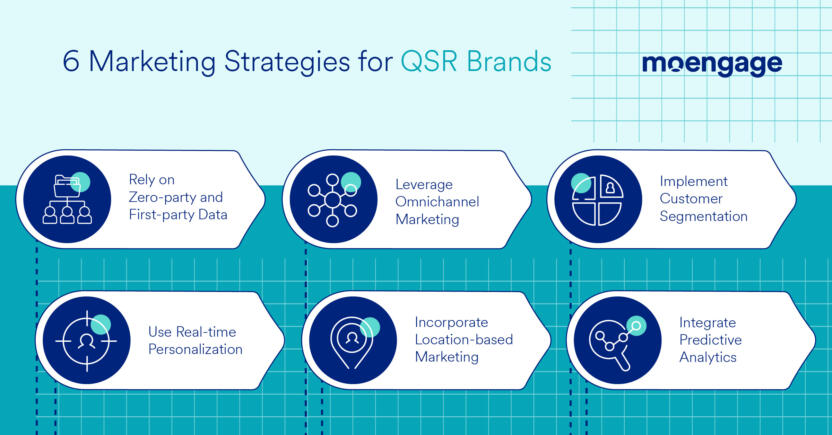
QSR brands don’t just need to get customers to order once, they need to convince them to keep coming back to them, so that they eventually become brand loyalists.
In a fast-paced industry focused on immediate gratification, it is crucial for them to have smooth customer experiences, both online and offline. Hence they need to adopt an omnichannel approach to connect with customers via their preferred channels, with particular emphasis on mobile-first engagement. Although 60% of restaurant operators plan to make investments in technology to improve customer experience, they also need to focus on hyper-personalization to communicate unique recommendations and offers that customers love (and want more of!).
Below, we look at top strategies for QSR brands looking to maximize engagement.
1. Rely on zero-party and first-party data for more accurate insights
Zero-party data is information that your customers willingly share via polls, surveys, and forms. This can include event registrations, newsletter sign-ups, loyalty program enrollments, and engagement with interactive content such as stories.
On the other hand, first-party data is collected via the customers’ interactions with the channels owned by your brand such as the website.
Zero-party and first-party data are more accurate than third-party data. It’s also considerably less expensive for QSR restaurant brands to not have to rely on purchasing external data that they can’t even verify is accurate. Beyond that, it’s an ideal way to collect valuable customer data that adheres to recent updates on data privacy rules.
2. Leverage omnichannel marketing to connect with customers
Omnichannel marketing is an evolution beyond multichannel marketing. When a business not only connects with its customers across multiple channels, but ensures that those channels integrate seamlessly with one another to pool information and use it to deliver an unmatched consistency of communication and experience.
From an online order placement to the offline completion of delivery, QSR marketing straddles both worlds of communication in absolutely every customer interaction. Fast food is uniquely positioned to benefit from omnichannel in this way.
Using Point of Sale (PoS) data to personalize customer experiences in-app and on web and mobile is a severely under tapped method.
Think about the last time you had a service worker offer “well, if you like that, you’ll love this” in an easy, casual manner. Delivering that experience accurately through digital cements loyalties and humanizes the brand.
The relevance is what is key here, though. Impersonal recommendations that don’t transfer across channels seamlessly offer nothing novel or valuable to your customer. Apply real recommendations that are based on what customers typically order, enjoy and rate.
3. Segment customers and serve relevant marketing campaigns
You can’t personalize your marketing tactics if you have limited understanding about your customers. Segmentation enables marketers to separate customers into distinct cohorts that share similar characteristics. This includes demographics, interests, behavior patterns, dietary preferences, etc. From “vegetarians” to “people who order late at night”, brands can ensure that the messaging customers receive is relevant to the cohort they belong to.
Maybe your team observes a segment of customers that chronically browse but never seem to place their order. They clearly have an interest in the food you have to offer, so what are potential ways to encourage them to give it a try?
Incorporate personalized, relevant messaging that speaks directly to the issues your customers are experiencing is a great way of connecting with them. For example, you can send them personalized recommendations via email that include a spice level rating each food item suggested, so customers are better equipped to evaluate their options and take a decision.
One method of segmentation is RFM. This stands for:
- Recency: How recently has the customer made a purchase from the brand?
- Frequency: How often does the customer make purchases from the brand?
- Monetary Value: How much does the customer typically spend?
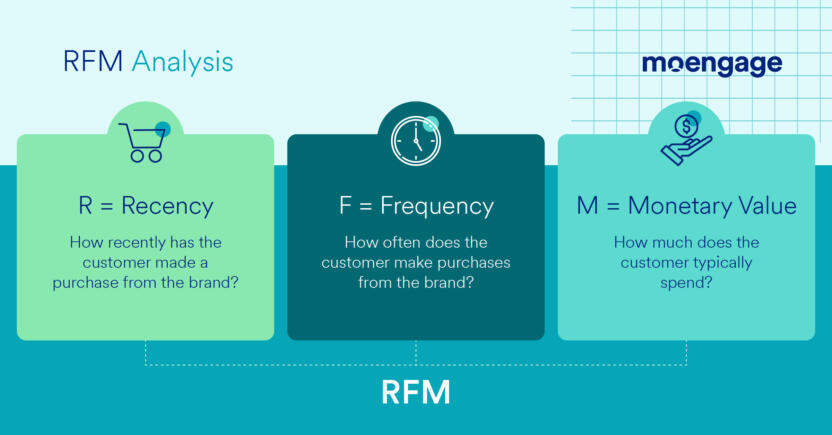
Using the RFM segmentation model, QSR brands can more effectively group customers based on factors like buyer intent and potential customer value. When used properly, brands can get a deeper understanding of how customers interact with their brand, and use those insights to foster engagement.
Overall, customer segmentation gives QSR brands the ability to see how different engagement strategies work with different groups of people, and refine these experiences to better meet each segment’s expectations and needs.
4. Use real-time personalization to increase traction
With mobile and web ordering channels, brands can take advantage of marketing QSR in real-time to influence ordering behavior and encourage engagement. This also adds a whole new layer of engagement.
On a macro level this can pertain to seasonal promotions, but on a hyper-personalization scale it’s about reaching them at just the right moment with an alert reminding them to engage with the website/app or complete a pending order.
Let’s say a customer typically likes ordering pizzas from a QSR brand. In order to keep them engaged, the brand sends them a push notification that says, “Hey Sam, Here’s a Buy-1-Get-1 deal on your favorite pizza. Valid till this weekend only.”
By sending such personalized messaging in real time, QSR brands can ensure their campaigns are contextually relevant and delivered at the perfect time. And these messages are far more likely to elicit engagement, as they are based on the customer’s behavior and buying intent.
5. Use location-based marketing to provide relevant recommendations
For QSR brands, location-based marketing is crucial. You need to be able to connect with customers when they’re hungry, and get them to choose your brand at that moment.
A great way to act on this intent is using geofencing that leverages location data to market to customers that are within a close proximity of your restaurant. Customers share their location data by using mobile apps, connecting to a Wi-Fi network, or interacting with marketing materials like QR codes or digital displays. QSR brands can use this location data to trigger digital campaigns that get customers interested in visiting their outlet. This can help them reach their audience at the optimal time and increase foot traffic to their offline establishments.
For example, a customer that is passing by near the restaurant can be sent a promotional message that includes a 15% a limited-time only offer, incentivizing them to come in.
6. Use predictive analytics to anticipate customer behavior
QSR brands can use artificial intelligence (AI) and machine learning (ML) to predict — and prevent — dormancy and churn.
You can identify customers willing to purchase or those who might uninstall your mobile app or become dormant, ahead of time. Armed with these insights, you can create highly relevant campaigns to nudge your customers towards the desired action.
For example, customers that have shown a high purchase intent can be steered closer towards an order completion. Similarly, customers showing signs of uninstalling your app can be served marketing communication that nudges them to revisit your app and spend more time on it.
Let’s explore how the above strategies work by looking at real-life examples from leading QSR brands.
5 QSR Restaurant Brands With Examples of Great Marketing
Customer engagement is proven to be a mandatory ingredient in the modern recipe. The following fast food and QSR brands that excel at customer engagement are going the extra mile and offering up fresh, curated campaigns for their customers to sink their teeth into.
1. Starbucks sends deals, bonus stars, and BOGO offers
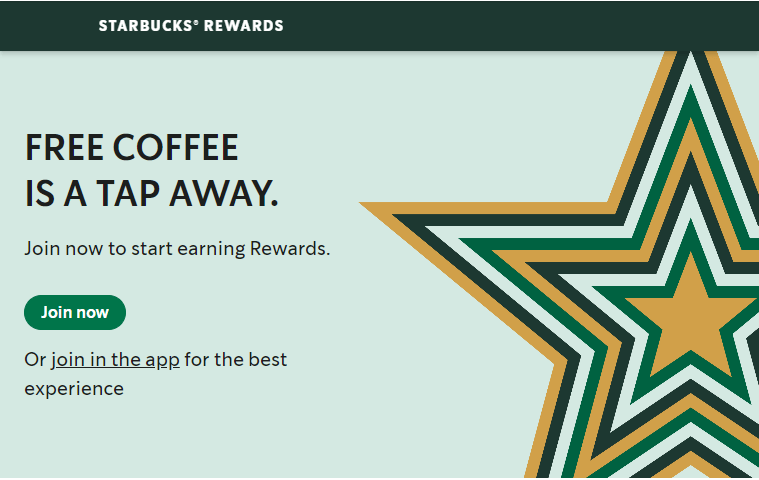
The current Starbucks rewards program makes use of many of the strategies that we have discussed so far. They implement omnichannel by tying in-store actions and promotions to their app. They have even opened accessibility to collect rewards using their website and mobile website for those who are hesitant to have the app on their phone.
The central pillar of their omnichannel strategy is their use of gamification in this program. By turning ordering into a fun and dynamic experience, they incentivize customers to accept cross and up-selling opportunities. Their games and offers are activated by the app and launched through their website to ensure no interruption from poor load times.
They also utilize their in-app experiences to ask their customers questions that Starbucks can use to further refine their segmentations and to prompt sign ups for emails, newsletters, and other channel integration opportunities.
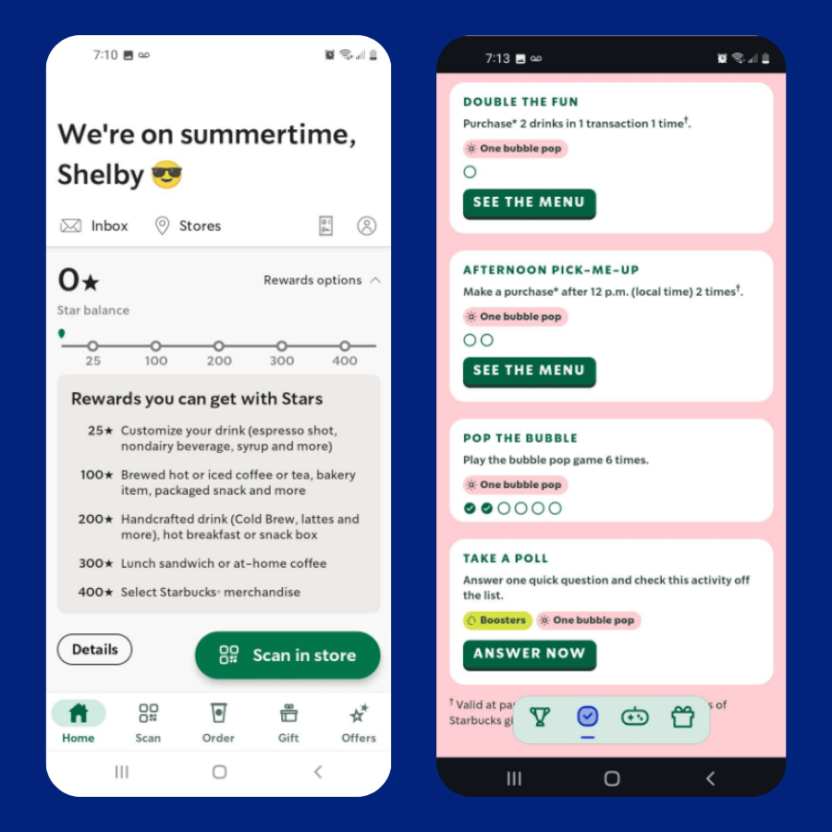
Starbucks making use of all of these strategies collaboratively is at the heart of why omnichannel marketing works. When your entire marketing ecosystem is seamless and all of the channels are threading together to guide the customer towards the path of conversion/re-conversion, the rewards for both customers and the brand stack.
There’s a reason Starbucks is the leading coffee shop chain in the US — mastering quick service restaurant marketing is it!
2. Domino’s drives rewards program engagement with personalized campaigns
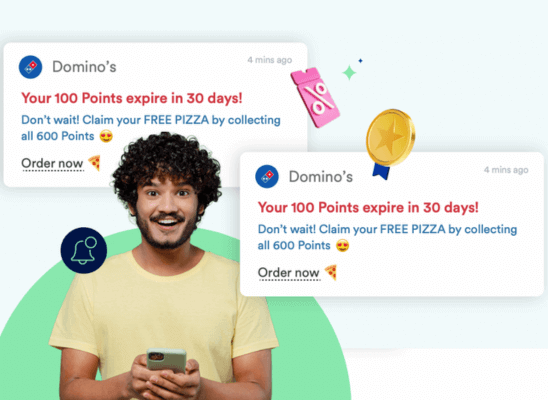
Domino’s decided that they weren’t satisfied with where they were at with their customer interactions, and needed to make a drastic change to their QSR marketing approach. Their previous engagement partner failed to align with their growth objectives so they began searching for an alternative customer engagement platform (CEP). Ultimately they selected MoEngage for its great user interface and unique capabilities.
With MoEngage’s CEP, they began to track drop-offs preemptively. Meaningfully engaging with customers at these crucial points activated their disengaged customers and eventually boosted their revenue.
In addition to this, they set up multiple automated, omnichannel journeys based on different customer segments and use cases, to engage their ‘Cheesy Rewards’ loyalty program members. This allowed them to send timely and personalized nudges such as “You’re X points away from a free pizza’ and reminders to claim reward points before they expire.
The results of these initiatives were so powerful that the number of orders coming in from the Cheesy Rewards program exceeded the numbers from the rest of their initiatives by over 20%.
3. McDonald’s engages customers with the fantastic, upside-down world of WcDonald’s
McDonald’s recent “WcDonald’s” campaign is a prime example of how brands can leverage fictional representations of their brand to connect with new customers and drive deeper brand loyalty with current customers. By embracing “WcDonald’s”, a name that appears across anime and manga to represent the iconic brand while eloquently dancing around copy infringement, McDonald’s was able to deliver a cheeky, fun campaign that resonated with the GenZ fandom.
As added elements in this month-long campaign, McDonald’s launched a limited-time savory sauce, collectible manga-themed packaging, an anime themed restaurant, and four anime films and mangas. The films and mangas were launched on the company’s website and were accessible through scanning the code on all McDonald’s packaging. During the campaign, customers were also encouraged to use the McDonald’s App in-store to avail exclusive offers on WcDonald’s meals and specials!
Integrating different channels (such as offline, website, and app) in such a manner and sending communication about the campaign and associated offers through different channels, is a great example of omnichannel marketing. Not only did this help McDonald’s drive adoption for its digital channels like the app, and increase conversions and sales, but also make a place in the hearts of a new segment, the “GenZ.”
The WcDonald’s campaign resulted in an 8.8% increase in total sales of ‘McNuggets’. McDonald’s also saw a 6.3B potential reach, 29.6M impressions, and 784.4K engagements, and 96.6K mentions on social media.
4. Chick-fil-A supercharges its customer experience with geofencing and real-time marketing
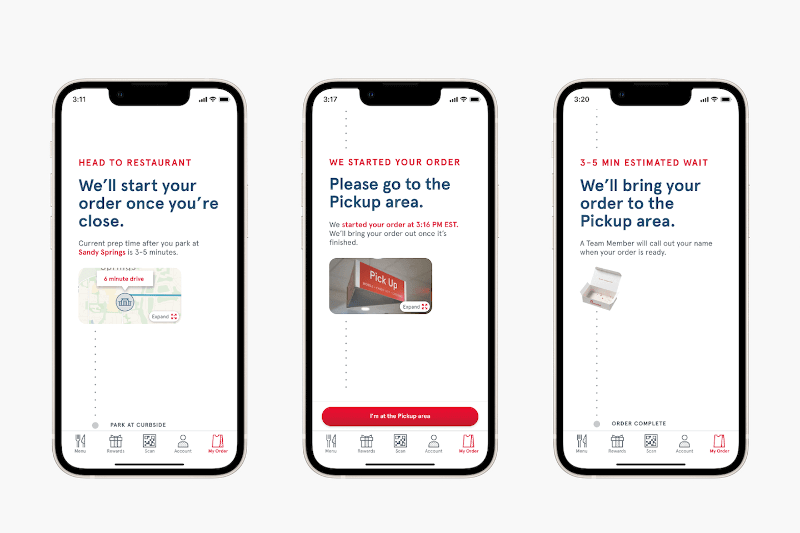
Chick-Fil-A spiced up its delivery workflow with the implementation of geofencing for curbside and carry-out orders placed ahead using their app.
Using this location service feature, the restaurant teams receive an alert when customers are close to the restaurant so that orders are prepared systematically to maintain efficiency and freshness. Simultaneously, customers also receive service updates in the app denoting approximate wait times before they depart, based on elements like order size, complexity, and other proprietary Chick-Fil-A analytics.
Since customers place the order in advance, the meal can be prepared while the customer is on the way. Mobile app tracking and geofencing are used to predict the customer’s ETA and identify precisely when they arrive for pickup. The order can be processed using this information so customers get a fresh meal that’s ready on time.
This enhances the customer experience in a few key ways. First, it makes the experience extremely convenient and easy by letting customers order ahead in just a few clicks. Second, it streamlines the process with orchestrated messaging via the app that informs customers on the status of their order in real-time. Lastly, it reduces wait times and keeps the food fresh.
After testing this across 100 restaurant locations in the US, Chick-fil-A was able to reduce wait times by one to two minutes per order and estimate wait times with 90% accuracy.
Sending timely communication that guides customers through such a process is critical for ensuring satisfaction, building consumer trust, and increasing future engagement. It adds credibility and ensures customers aren’t left in the dark about the state of their order. In an industry where customers are often impatient, accurate and timely communication that can keep them informed is more important than ever.
5. Franki uses predictive analytics to mitigate churn and increase retention
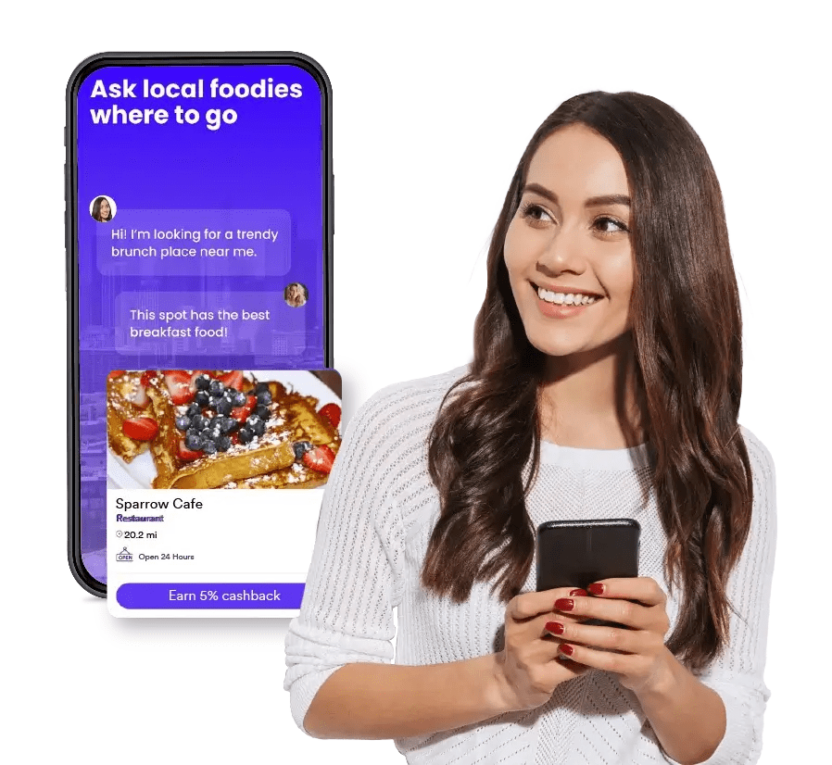
Franki is positioned to be a partner to QSR brands: offering something more refined than a search engine or aggregate review site. They are a community-focused brand that lets customers find good restaurants and experiences through video reviews shared by local foodies and creators.
Using MoEngage’s Sherpa, Franki predicts customers that are likely to drop-off. They create elaborate customer journey flows, automate campaign optimization via AI, and send personalized notifications based on each customer’s best time to send, to target this specific segment. By engaging such customers proactively, Franki has been able to reduce churn significantly.
Over a 9 month period, Franki saw a:
- 6-7% average CTR
- 225% uplift in conversions
- 12% increase in retention
The QSR Software With Marketing Automation Power: MoEngage
The examples above clearly showcase the value of implementing customer-centric, omnichannel, and hyper-personalized engagement strategies within the QSR industry. But how can you recreate these ideas for your brand?
Building successful customer engagement campaigns can be made easier with the help of marketing automation tools like MoEngage.
A powerful CEP like MoEngage allows QSR marketers to manage customer expectations and deliver engaging, omnichannel customer experiences at the same time.
MoEngage has designed its tools around proven, key strategies relevant to food service to ensure you succeed every step of the way.
See for yourself how MoEngage can help you streamline your customer engagement campaigns and generate more repeat customers by taking a demo.

